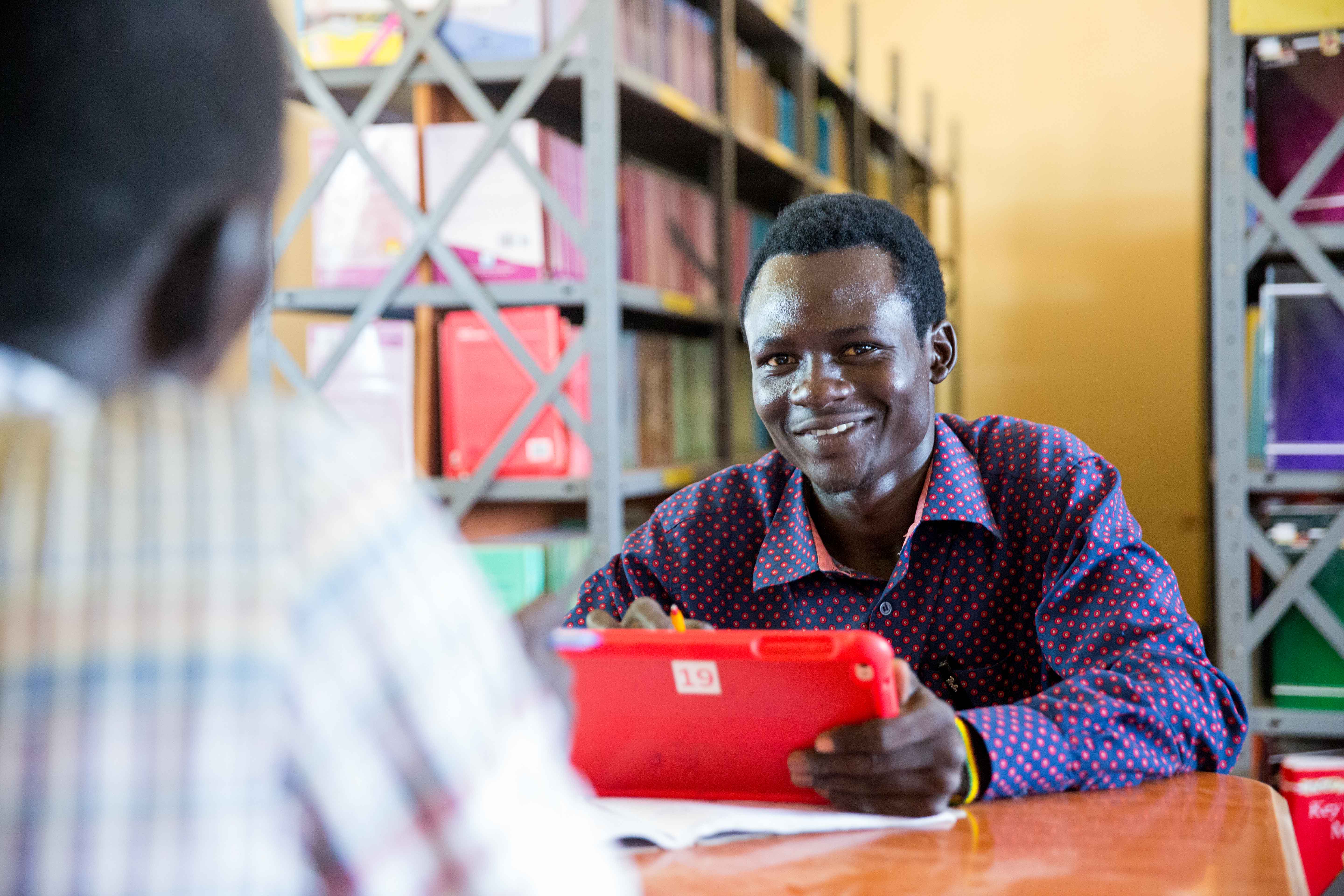Shining a light on promising practices in refugee education
As a Syrian, people often ask me about how the war in Syria can be stopped and how we, the youth, will rebuild our country. In terms of ending the war so much is out of my control. But reconstructing my country and keeping peace is heavily dependent on ensuring our generation is knowledgeable and skilled. That is why advocating for quality learning opportunities for refugees is now a key part of my life.
Learning is essential for displaced children to have hope and protection, to survive displacement and trauma and to become productive members of their societies. Yet, 3.7 million refugee children are still deprived of access to school; and the lucky refugee boys and girls who can enrol are not effectively learning due to factors such as overcrowded classrooms, overworked and stressed teachers, bullying and unfamiliar language of instruction and curriculum.
Below, I highlight a forthcoming opportunity to align our efforts towards greater impact, and present promising practices that are already making a big difference.
The opportunity of the Global Refugee Forum
Back in December 2018, the UN General Assembly adopted the Global Compact on Refugees. This global agreement declares that States and relevant stakeholders will contribute resources and expertise to expand and enhance the quality and inclusiveness of national education systems, and thus facilitate access for refugees. It also promised that more financial support and special efforts will be mobilised, so all refugee boys and girls receive a quality education within a few months of their displacement
This commitment from the international community is to be very much welcomed. With the first ever Global Refugee Forum approaching in December this year, we now have a key opportunity to turn the Compact into action. All education champions from states, international organisations, financial institutions, civil society, academics, private sector, media and refugees themselves are invited to announce concrete pledges and contributions that will achieve tangible benefits for refugees and host communities.
See the Global Framework for Refugee Education, produced by over 50 education co-sponsors for the Forum for inspirational ways your organisation can make commitments and engage with your government to make strong pledges on education.
Promising practices
 To develop an impactful global plan for refugee education, it is critical for States and other stakeholders to revisit and learn from promising practices in refugee education.
To develop an impactful global plan for refugee education, it is critical for States and other stakeholders to revisit and learn from promising practices in refugee education.
Back in 2017, Save the Children partnered with Pearson and UNHCR on the ‘Promising Practices in Refugee Education’ initiative to identify and promote innovative ways to unlock quality education to refugee children. The project highlighted key findings and lessons learned from 18 brilliant projects from a range of different organisations and geographies. These case studies cover a variety of programmes focusing on equity, access, learning, wellbeing, technology and system strengthening. The learnings from these initiatives were synthesised into 10 recommendations in this report and showcased and discussed at a high-profile side event at the UN General Assembly in 2017. Three of the case studies are featured below.
Early Childhood Care and Development (ECCD) is vital for all children, but of particular benefit to refugees. The ‘Time to be a Child’ programme lead by War Child UK provided play, learning and child-centred development activities to children affected by the Syrian crisis in Jordan and Lebanon through a series of ‘safe spaces’. Psychosocial support was delivered to parents and caregivers, supporting the maintenance and creation of safe and nurturing home environments. Child protection committees formed of local adults kept children safe and built awareness of child rights. The programme had high attendance scores above 83% across the ECCD centres in Zarqa, Amman, Mafraq and Zaatari camp.

Tfe Vodafone Foundation developed the Instant Network Schools (INS) programme to transform existing classrooms in DR Congo, Kenya, South Sudan and Tanzania, into innovation hubs for learning provided with Internet connectivity, sustainable solar power, and an Instant Classroom. The programme aims to enhance refugees’ access to digital education by providing digital classrooms in-a-box specially created for the INS programme, each includes 25 tablets, a laptop, a projector and speaker, a 3G modem and batteries to run the kit for a day of class. At that time, the programme was already benefitting over 86,000 refugee students and 1,000 teachers.

In Kenya, the Teachers for Teachers initiative through Teachers College Columbia University combined teacher training, peer coaching and mobile mentoring in order to provide the knowledge and skills necessary for teachers to make their classrooms protective, healing and learning environments. Teachers who participated in the programme reported better preparation, higher confidence, a stronger sense of purpose—not just as educators, but also as advocates for child protection and positive discipline—and that they were more aware of useful practices that can be used in their classrooms.

Call to action – share your promising practice
Highlighting and learning from promising practices should be at the heart of our activity for the Global Refugee Forum. I am working with Save the Children to call on all INEE members, Member States, NGOs and private-sector organisations who work on refugee education to share their successes and lessons learnt ahead of the Forum in December. You can do so by submitting a Good Practices Form through the Forum website.
Refugee education is a complex challenge, but if we approach it collectively and learn from each other’s work then we can open the door of free, quality, safe and inclusive education to many more refugee boys and girls.
Read more about the GRF and how we can fulfill our commitments to refugees in this recent INEE blog post.
The views expressed in this blog are the author's own.



